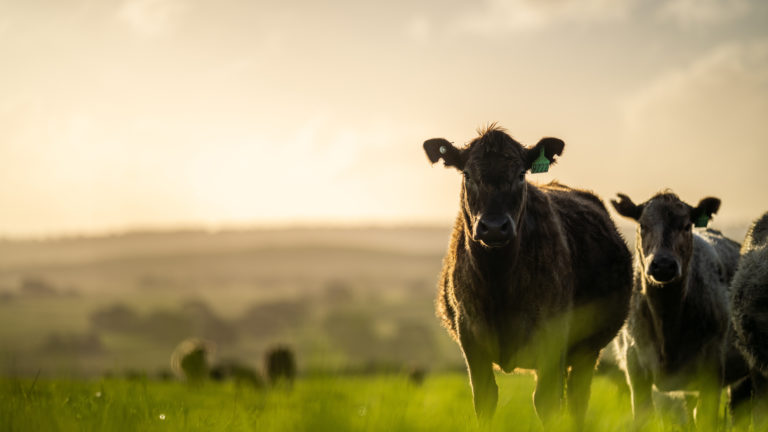Guide to animal mortality and insurance

For livestock and dairy farmers, protecting the health of animals is paramount. But when things go wrong, it’s equally important to protect your investment, and your earnings, with animal mortality insurance.
In this guide, we’ll look at how animal mortality insurance works, the causes of animal mortality, how to manage fallen stock, and the calculations involved.
- What is animal mortality insurance?
- How does animal mortality insurance work?
- What is an example of animal mortality insurance?
- What is the mortality rate or animal death rate?
- How can you calculate animal mortality rate, cumulative mortality, and case mortality?
- What are the influencing factors of animal health and animal mortality?
- How to manage and dispose of fallen stock
What is animal mortality insurance?
Animal mortality insurance, more commonly known as ‘all risks mortality’ or ‘livestock mortality insurance’, protects the policyholder against financial loss following the premature death of a specified animal.
Cover includes death as a result of accidental, violent, external and visible means, and illness or disease.
Animal mortality insurance can normally only be purchased alongside a farm combined insurance policy.
How does animal mortality insurance work?
Farmers who rely on livestock for all or part of their income could be significantly impacted by the death of one or multiple animals.
Animal mortality insurance provides cover for a specified animal, and is usually subject to the completion of a livestock proposal form and checks that the animal or herd is free from defects and disease. In some cases, a veterinary report will be required.
The cost of animal mortality insurance will depend on the perceived risk to the insurer, so older animals are likely to cost more to cover. Most insurers will have age limits for animals, with cover unlikely to be provided for animals less than six months old, or more than six years old, and cover is typically unavailable for animals with pre-existing conditions.
Insurers will pay a claim up to the value of the animal specified on the policy following a death resulting from a sudden and unforeseen event, such as:
- death in transit or as a result of wandering on to a public road or river;
- worrying by a dog, fox, or vermin to the point of death;
- fire, storm, flood, explosion etc;
- any accident where the injury is so severe the animal has to be humanely killed.
Animal mortality insurance does not cover animals that die from natural causes or old age.
Cover can also be extended to include the loss of income as a result of a breeding animal becoming permanently infertile, impotent, or incapable of service – referred to as ‘loss of use’.
What is an example of animal mortality insurance?
A livestock farmer wishes to insure their prized, three-year-old bull for a sum insured of £10,000.
They are worried that if the bull should suffer an accident or illness resulting in sudden death, they would lose an important part of their breeding programme that could cause them financial loss.
The bull’s sum insured of £10,000 will usually be in addition to a general livestock sum insured covering the remaining herd as a collective.
While the cost of insurance will come off the farmer’s bottom line, this is a small price to pay in comparison with the potential losses incurred should disaster strike.
As with most insurance policies, there will be an excess to pay if the policyholder makes a successful claim.
What is the mortality rate or animal death rate?
We’ll now take a closer look at mortality in animals, starting with the mortality rate, or animal death rate.
Animal mortality simply refers to the death of an animal, while the mortality rate – expressed as a percentage – measures the number of deaths in your herd over a particular cycle or period.
The mortality rate is just one of a number of key considerations when evaluating the productivity of an enterprise.
- Reproductive rate: measures the animals’ fertility, such as the number of births per female per year, and the number of offspring per birthing.
- Offtake rate: the proportion of animals sold or consumed for meat per year.
- Feed conversion ratio: how efficiently animals turn the food they consume into the finished product (eggs, milk etc).
- Milk offtake: in dairy production, this is the amount of milk sold for human consumption, not including that used to feed young animals.
These factors will all play into your strategy, whether it’s herd growth (reproductive rate), or sales (offtake rate).
But the animal mortality rate affects all of the above and will directly impact your farm’s profitability in the long run.
An animal mortality rate calculation gives you a good idea of the likelihood of an animal dying on your farm and will provide a baseline for improvement of animal husbandry.
How can you calculate animal mortality rate, cumulative mortality, and case mortality?
The animal mortality rate is calculated as a ratio of the number of deaths relative to the opening stock and the number of newborns, using this formula:
Mortality rate % = number of deaths / (opening stock + number of newborns) x 100
The cumulative mortality rate measures the risk of animals dying from disease during a specific period, and uses this formula:
Cumulative mortality = number of deaths / closing stock
And the case mortality rate measures the proportion of infected animals with a specific disease that went on to die from it during a fixed period. This can provide information on the severity of a disease and, when compared with other farms or settings, can help analyse the effectiveness of different treatments, and the impact of different environments.
Case mortality = number of deaths from a disease / number of disease cases x 100
Example calculations
We can compare two farms, each with a pig population of 100 hit by an outbreak of disease.
Farm A suffered 14 fatalities from 40 infected pigs, where Farm B suffered 10 fatalities from 20 infections.
Let’s look at the mortality rate, cumulative mortality rate, and case mortality rate of each farm.
Farm A
Mortality rate = 14/100 x 100 = 14%
Cumulative mortality rate = 14/86 = 0.163%
Case mortality rate = 14/40 = 0.35 x 100 = 35%
Farm B
Mortality rate = 10/100 x 100 = 10%
Cumulative mortality rate = 10/90 = 0.11%
Case mortality rate = 10/20 = 0.5 x 100 = 50%
These simple examples show that Farm A had a higher number of deaths and disease incidence, but the impact of the disease was greater in Farm B.
What are the influencing factors of animal health and animal mortality?
There are four key influencing factors that feed into animal health and animal mortality.
Poor nutrition and diet
It’s essential to provide enough quality feed and fresh drinking water for animals to grow, develop, and keep warm. It will not only make the animal healthier but will allow it to fight off any illness or disease more effectively.
The age of the animal
The greatest risk of death for animals comes in their early days and as they age, as well as during childbearing for females.
Poor environmental condition
Animals must be kept in clean, safe, comfortable conditions to thrive, which means not overstocking pens; maintaining adequate fresh air and lighting; monitoring pollution; and storing chemicals safely and away from animals.
Poor disease prevention
Although accidents do happen, animal disease is by far the biggest cause of mortality on farms, so it’s essential to maintain high biosecurity standards to help prevent disease outbreaks.
The most obvious disease prevention measure is to ensure your animals are vaccinated against preventable diseases.
By monitoring your mortality rate, you can gain valuable information about the welfare of your animals and put steps in place to tackle any problems.
How to manage and dispose of fallen stock
What is fallen stock?
The term fallen stock is used to describe farm animals that have died on your premises.
Why is it vital to manage fallen stock correctly?
Farmers are responsible for the safe and legal collection and disposal of fallen stock to safeguard the remaining healthy animals on the farm, and for public and environmental health.
Correctly disposing of fallen stock prevents the spread of diseases, and protects the air, water, and soil quality.
It is against the law to burn or bury fallen stock on your farm, or to feed fallen stock to birds that feed on animal carcasses.
The government has published advice on the management of fallen stock.
How to dispose of fallen stock in the UK
Farmers must arrange for the animal carcass to be collected by an approved transporter for disposal ‘without undue delay’ after it has died.
They can either use the National Fallen Stock Company, a not-for-profit, industry-led community interest company, or an approved animal by-product operating plant.
Methods of disposal include:
- rendering: a heat-driven process that converts waste animal tissue into products including fuel, feed, and fertiliser;
- incineration: a safe and biosecure method of disposal where the animal’s carcass is completely incinerated under high heat.
In some circumstances, fallen stock can also be transported to a knacker, a hunt kennel, or a maggot farm.
To find out more about animal mortality insurance, and how best to protect your farm from the risks it is exposed to, contact us on 01603 218000.



